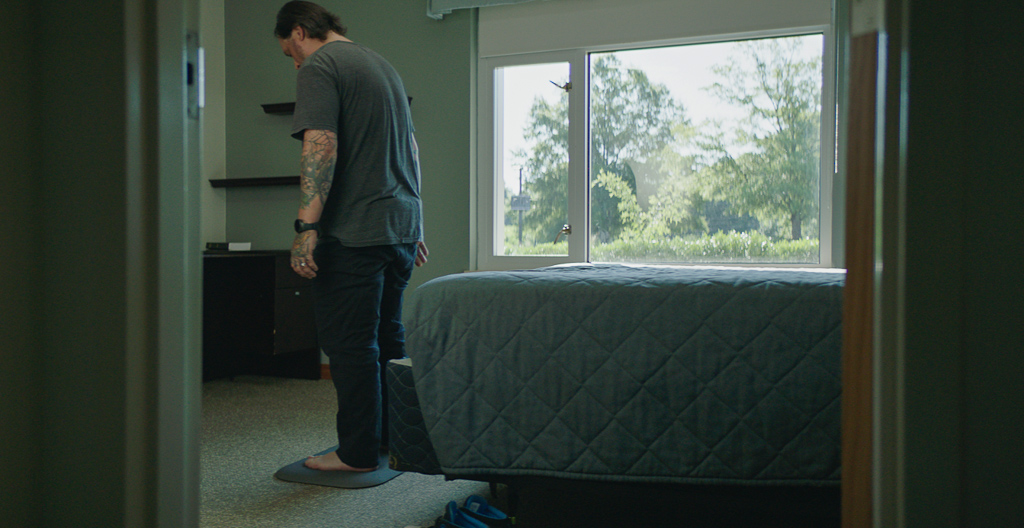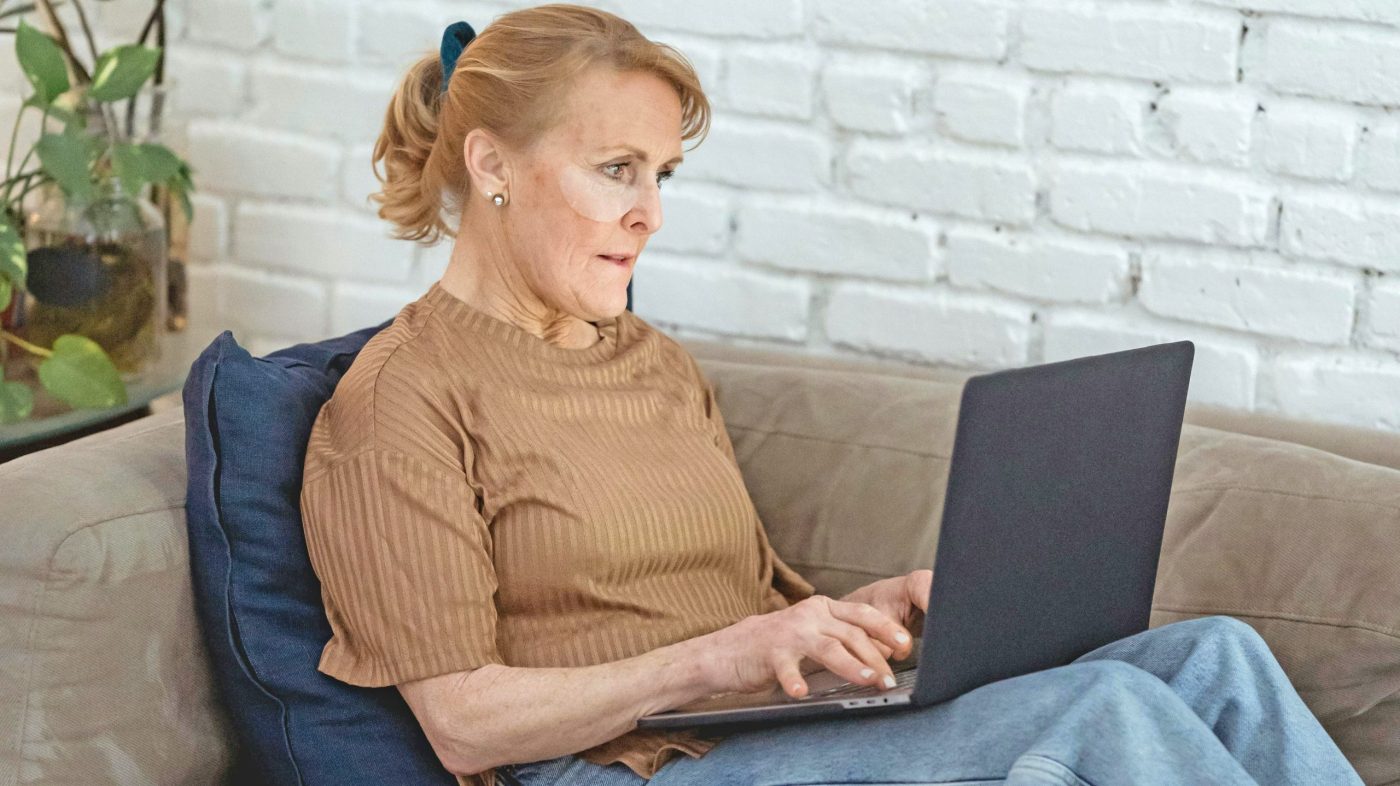There is new hope for Veterans with diabetes who are vulnerable to foot infections, ulcerations and amputation. VA’s new, non-evasive medical advancement Podimetrics Mat offers detection of diabetic foot ulcers (DFUs) as early as five to six weeks before they would otherwise present.

Veteran James Pauley learns how to use the Podimetric mat at the Richmond VA Medical Center. Kate Wood, of Podimetrics, assists.
The radiation-free mat uses special thermal imaging to measure the temperature of a patient’s feet. Patients simply stand on the mat for less than a minute each day. This technology allows clinicians to prevent added deterioration and avoid other possible complications.
“Since 2004, research suggests that temperature-monitoring may be an effective way to predict, thus prevent, diabetic foot ulceration,” said VA’s National Program Director for Podiatry Dr. Jeffrey Robbins. “If not detected early, diabetic ulcers can lead to serious complications including complex infections, amputations and sometimes death.”
Better quality of life for our Veterans
VA data shows the cost to treat each ulcer is $47,000. Diabetic care costs VA an estimated $3.5 billion annually. The cost of the mat is approximately $3,500.
“If we can reduce even 25% of foot ulcers treated in fiscal year 2019, that’s a protentional cost avoidance of $875 million annually,” adds Robbins.
A VA-led study in 2017 connected Robbins to this technology. The mat is currently used in 15 VA locations for high risk patients who are most vulnerable to foot infections, ulcerations and amputation.
VA launches regional pilot program
VA’s Innovation Ecosystem is implementing a regional pilot program this month. The study evaluates care models resulting in DFU prevention using this technology at VA facilities in the southeast where DFU rates are highest.
Technologically innovative solutions like this can provide a better quality of life for our Veterans. Last year, VA treated more than 75,000 patients with DFUs nationwide.
Ndidi Mojay is a public affairs specialist for VA’s Office of Media Relations.
Topics in this story
More Stories
Columbia VA’s robotic surgery teams completed their 800th robotic surgery and are on schedule to hit 1,000 by the end of the year.
In a decentralized clinical trial, Veterans can participate from their own homes or local VA instead of having to travel to a research site.
After serving in the Air Force for 25 years, Larry Wilson is now a My HealtheVet coordinator helping Veterans navigate their care.







I’m getting ulcers on my lower legs & they are not healing right away. What can I do?